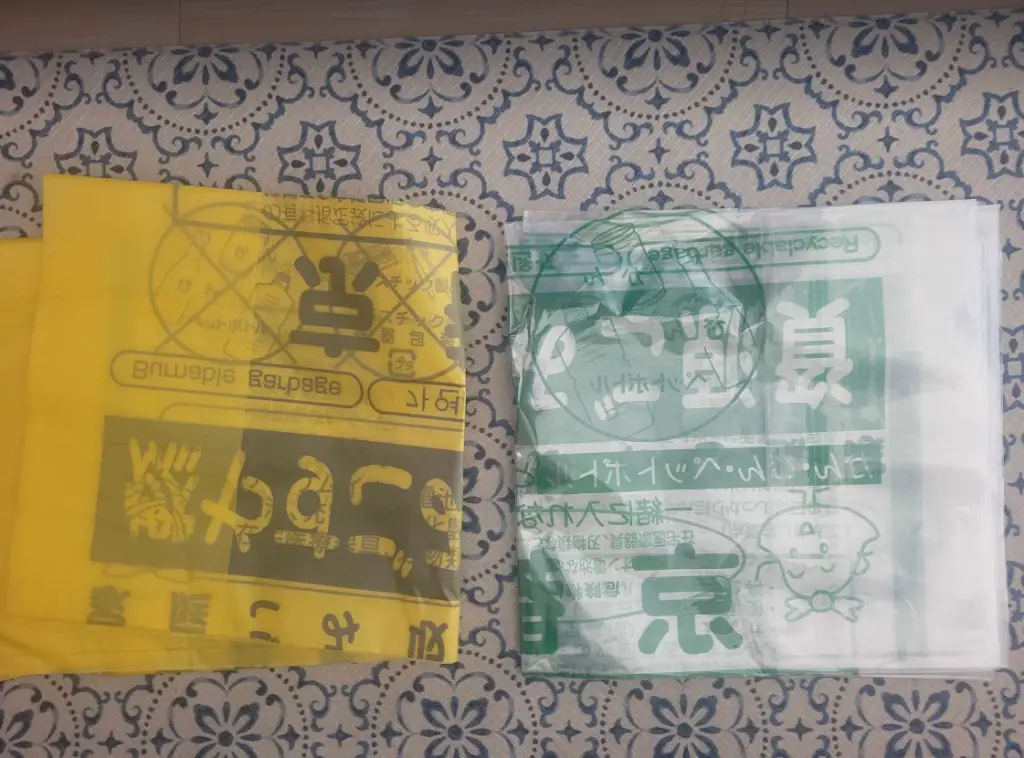By far, Japan has the most complex waste disposal procedure I’ve ever seen, but after reading this guide, you’ll be cleaning up like a local!

Waste disposal in Japan is a totally different and more intricate process than what I’m used to in Australia. From multiple categories of garbage sorting to bin collections every other day, here’s everything you need to know about waste management in Japan:
Collection Days

When it comes to bin collections in Japan, there’s good news and bad news for foreign residents who are new to the whole gig.
The good news is that there are two collection days per week for burnable garbage (as opposed to one day per week in Australia), so you don’t need to worry about your bin overflowing.
The bad news is that your recyclable garbage is subdivided into more categories (discussed in the next section).
Sorting Garbage

Essentially, there are four collection days per week: two for combustibles/burnables, one for plastics, and one for bottles and cans. Furthermore, there is a fortnightly collection specifically for cardboard. All you need are these two special types of plastic bags which can be purchased at convenience stores and supermarkets in your local area. The yellow one is for combustibles and the white one is for recyclables.

For the most part, the separation of burnables and recyclables is not so different than in the West, but the added task of separating bottles and cans is a bit of a pain.
Perhaps the most annoying part about it is how much extra space it takes up in the house.
While it’s great that there are two collections per week for combustibles, I kind of wish there were two collections for plastics as we seem to fill those bins faster.
Japanese plastic products are labeled with a プラ emblem, which basically reads as “pla” and is a shortened katakana word for plastic.
The issue is just about every piece of rubbish seems to have this label on it, meaning it belongs in the plastic bin, ultimately leaving very little for the combustible garbage which, for some reason, gets only two collections a week.
In any case, while you will be separating plastics as one category and bottles and cans in another, both these categories use the same type of garbage bag i.e., the white one denoting recyclable items, so keep that in mind.
Community Garbage Nets
Onto something more positive, what I love most about garbage disposal in Japan is the community garbage nets you’ll find on suburban streets.
This is where you take out your sealed garbage bags when they are full. Simply place them underneath the net so that it’s protected from the rain (and crows).
The reason I really like this method of disposal is it keeps the streets looking nice and clear as everyone’s garbage is gathered neatly in one place.
Contrastingly, Australia has endless rows of black bins in front of every household on collection days which can really crowd the streets and affect cars trying to park. It also looks quite unaesthetic.
So there you have it! A quick and easy guide to waste disposal in Japan. If you’re new to the country, then I hope this article will be the hidden gem that you need!

Of course, if you are planning to visit Japan, you’ll need a way to get around the country as efficiently and affordably as possible. Japan Rail provides an abundance of travel passes to suit your travel needs. So whether you are traveling individually or as a group, the JR Pass is every traveler’s go-to for getting around and making the most of your time in Japan!
